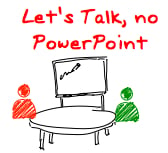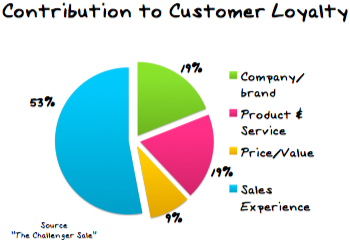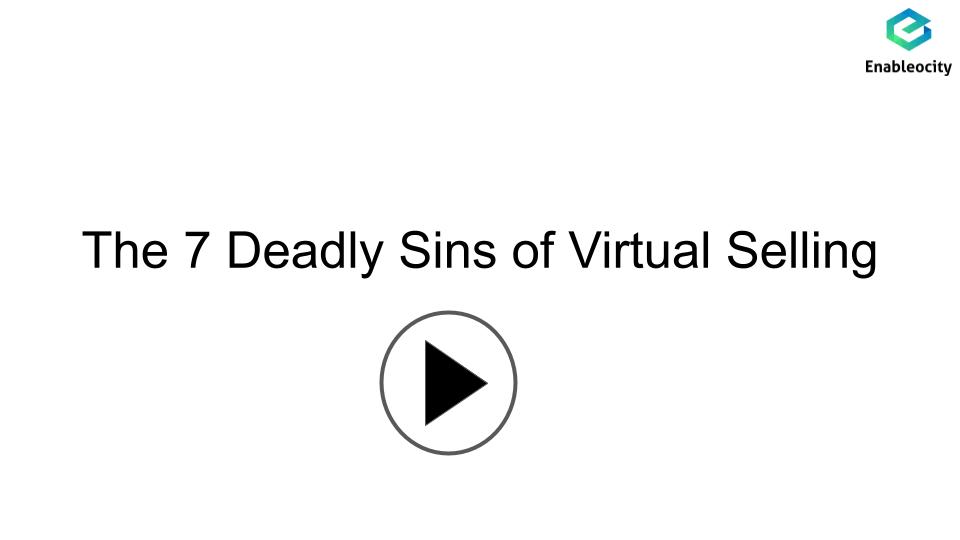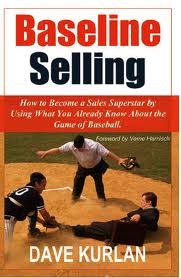With so much at stake in every prospect encounter, why would I promote the idea of leaving the laptop, PowerPoint presentation and LCD behind? I've been working with sales and marketing teams for the past 8 years as a consultant to help align sales and marketing messages and create clarity around value creation. With one or two exceptions from the hundreds of presentations I've seen, they all follow the same format.
I've been working with sales and marketing teams for the past 8 years as a consultant to help align sales and marketing messages and create clarity around value creation. With one or two exceptions from the hundreds of presentations I've seen, they all follow the same format.
It's all about me, my big office, my stuff, my awards, my customers (slide 4), my partners, my products, my compelling features and my unforgettable and highly differentiated benefits.
It's like there was a gold standard master PowerPoint presentation written 20 years ago and every presentation since has inherited the format....only the buildings and the names change.
If you want a good laugh and some introspection take a look at the Chicken, Chicken, Chicken video below (Thanks to Neil Warren for making me aware of this).
Buyers actually don't need or want your presentation, except maybe after you have done discovery, figured out their needs, built consensus around their ideal solution and then I suggest that there are better ways to communicate it.
Here's a new rule for you: In B2B selling, "use PowerPoint in the first meeting, don't get a second one."
PowerPoint, a Barrier to Success in B2B sales
We need to be encouraging message ownership and teaching salespeople communication and language skills, not training on PowerPoint presentation skills.
When a salesperson is presenting, they learn nothing. When they are having a conversation they have a chance to learn what they want to know.
David Sandler was a sales trainer in the pre-Interent age. He had a rule for salespeople...take nothing with you on your first meeting with the prospect. The goal of the first meeting is to qualify the opportunity and to get another meeting. He was talking about the insurance industry and the salesperson's briefcase. The briefcase with the insurance brochures, applications, actuarial charts etc, has been replaced in B2B sales with a laptop computer, PowerPoint presentation and LCD projector. He likened the salesperson's briefcase to a child's security blanket.
His advice is as relevant today as it was then and I encourage salespeople to take nothing with them to a first call. Isn't this a bit radical?
Yes it's radical and the reasons I suggest why it might be a good idea are as follows.
- By taking nothing with you, you disarm the prospect....they are expecting the laptop and the LCD.
- Taking nothing with you signals to the prospect that you are prepared to have a conversation rather than a presentation....and they will welcome this.
- Taking nothing with you forces you to think through in advance of the call, what you need to get from the meeting and the insight you want to give the prospect and how you are going to lead the conversation.
- By taking nothing with you, you will have to commit to memory a number of proof points and anecdotes to communicate how others have been able to create value through using your products
- Taking nothing with you means elevating your communication skills to a level where you effectively communicate with the prospect without the PowerPoint crutch
- Taking nothing with you forces salespeople into a situation where they have to own the company message and how the products/services create value.
- Taking nothing with you means you might actually learn something on the sales call instead of doing most of the talking. Sandler suggested that salespeople do 30% of the talking and buyers 70%. If the average salesperson did 50% of the talking, it would be a huge improvement and they would sell a lot more stuff.
- Taking nothing with you differentiates you from nearly everyone else your buyer will meet, -they are the ones with the laptop/PowerPoint security blanket.
- Taking nothing with you takes courage and the likelihood is you will raise the energy level in the room.
- Taking nothing with you on the first call and committing to your outcome will make you a better salesperson
Take-Aways
- According to extensive research conducted by the Corporate Executive Board,
 published in The Challenger Sale, 53% of the contribution to customer loyalty comes from the sales experience itself. Only 38% comes from the combined value of the company brand, product and service. (Price is 9% by the way).
published in The Challenger Sale, 53% of the contribution to customer loyalty comes from the sales experience itself. Only 38% comes from the combined value of the company brand, product and service. (Price is 9% by the way).
How you communicate and what you communicate in moments of truth when in front of customers is what matters and this is where companies need to invest training dollars. - Message ownership comes with deliberate practice and feedback from experts (sales managers) and most salespeople need encouragement to practice skills.
- The communication and language skills taught in a typical NLP Practitioner certification will help salespeople elevate their ability to communicate and to listen more effectively.
- Salespeople need to master visual storytelling skills, not PowerPoint presentation skills.



